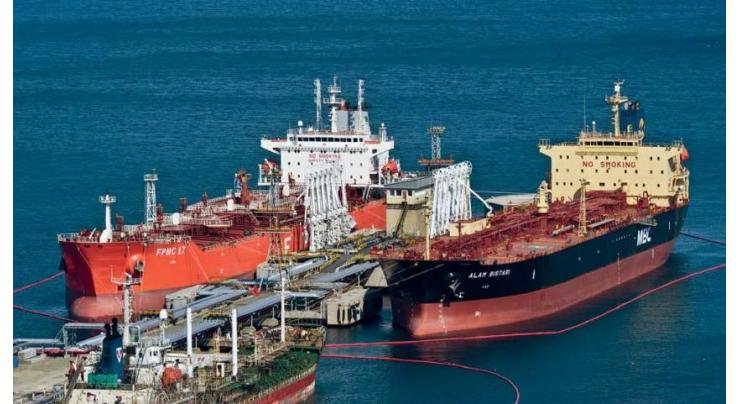
- Home
- Business
- News
- Russian Transport Ministry Expects Funding of $13.6Bln for Northern Sea Route in 2019-2024
Russian Transport Ministry Expects Funding Of $13.6Bln For Northern Sea Route In 2019-2024
Sumaira FH Published January 23, 2019 | 07:37 PM

The Russian Ministry of Transport expects to receive 900 billion rubles ($13.6 billion) in investments for the development of the Northern Sea Route, the Russian part of the Northeast Passage, between now and 2024, with state investments to account for one-third of this total, Deputy Minister of Transport Yuriy Tsvetkov said on Wednesday
"The planned volume [of investment] is around 900 billion rubles. It is for six years. It is hard to give a forecast as several companies have not yet made their investment decisions, and a large part of the projects [will be financed] with non-budgetary capital. Budgetary [capital] will only account to one-third [of the total amount]," Tsvetkov said.
On January 21, Russian media reported that the Russian Agency for Maritime and River Transport had prepared a new plan to implement the Northern Sea Route project.
According to the road map, the development and maintenance of the Northeast Passage in 2019-2024 will require 905.6 billion rubles. The Russian government will provide 305 billion rubles, while the remaining funds will come from private investors. Additional state funding required for the project in 2019-2021 is estimated at 139.5 billion rubles.
The plan to develop the Russian part of the Northeast Passage, the shipping route along the Arctic coasts of Norway and Russia, includes several large-scale projects, such as modernizing sea and land infrastructure and building an icebreaker fleet. The route is expected to become a shorter alternative to the passage through the Suez Canal that is commonly used nowadays to deliver cargo from Asian ports to Europe.
Related Topics
Recent Stories

PTI to stage nationwide protests against alleged electoral frauds

Senate continues discussion on Presidential address to Joint Sitting of Parliame ..

Masood Khan calls for Pak-US cooperation for regional peace

Interior Minister starts Margalla Trail Patrol for security

Currency Rate In Pakistan - Dollar, Euro, Pound, Riyal Rates On 26 April 2024

Today Gold Rate in Pakistan 26 April 2024

ICC Womens T20 World Cup Qualifier, Match 2: Ireland Women open with Comfortable ..

Robinson, bowlers help New Zealand go 2-1 up against Pakistan

Shahzeb Chachar to hold khuli kachehri on April 26

Heatwave amid Israel's aggression in Gaza brings new misery, disease risk

Tourism must change, mayor says as Venice launches entry fee

Court adjourns Judicial Complex attack case till May 17
More Stories From Business
-
Kitchen items’ prices ease as weekly inflation falls by 1.1%
30 minutes ago -
Shipping Activity at Port Qasim
2 hours ago -
Machinery equipment assembling grew by 70.98% in 08 months
3 hours ago -
Gold rates up by Rs.2,500 per tola to Rs245,000
3 hours ago -
Miner Anglo American rejects BHP's $38.8 billion takeover bid
4 hours ago -
Exchange rates for currency notes
6 hours ago
-
Foreign exchange rates
6 hours ago -

Currency Rate In Pakistan - Dollar, Euro, Pound, Riyal Rates On 26 April 2024
7 hours ago -

Today Gold Rate in Pakistan 26 April 2024
7 hours ago -
Chinese minister felicitates Ahsan Iqbal on reappointment as Planning minister
16 hours ago -

Pak-US officials engage to enhance trade, investment ties
17 hours ago -

Stocks fall as tech shares sink, US economy slows
17 hours ago









